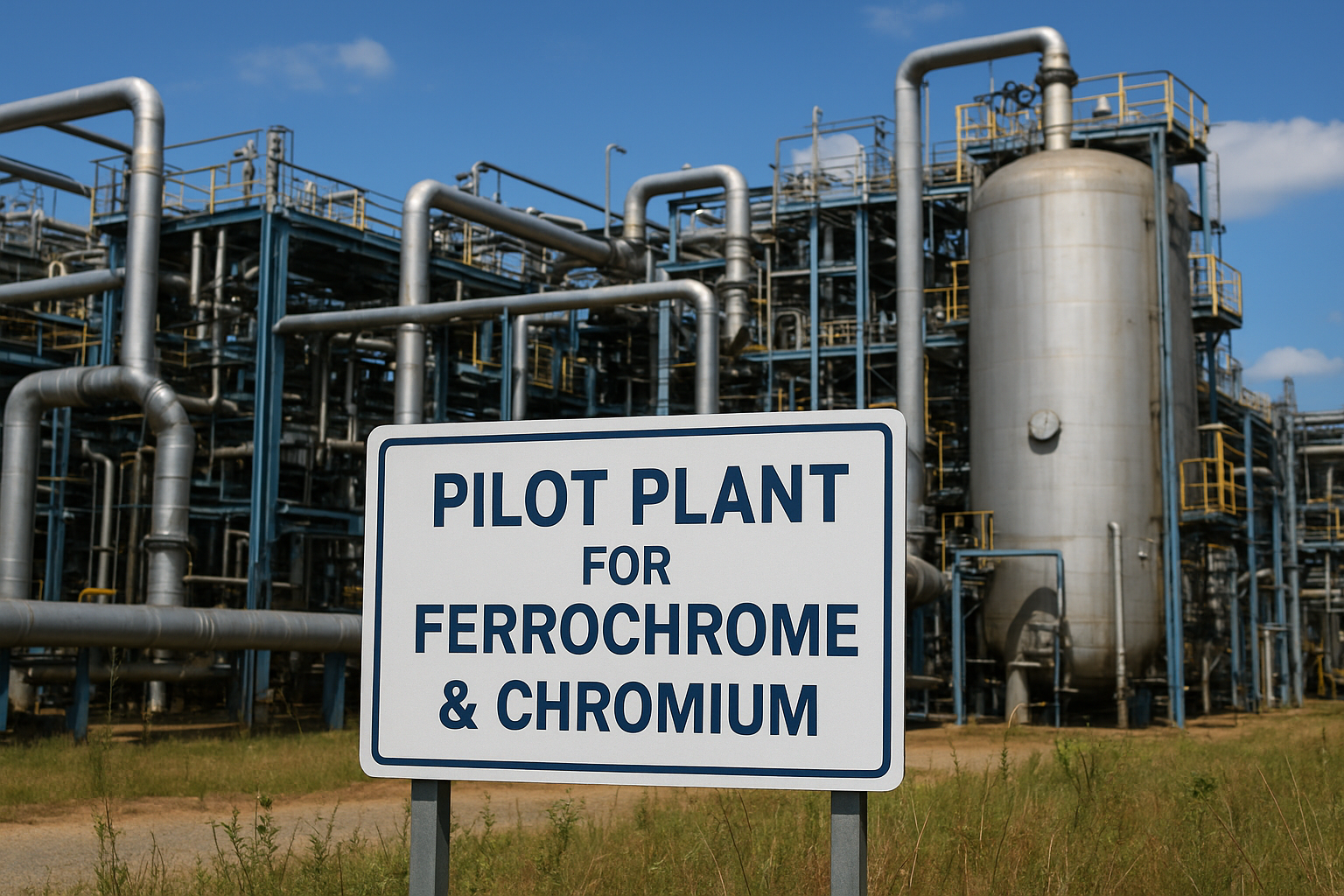The global race for energy-transition materials just gained another serious contender. Outokumpu Corporation — the Finnish stainless-steel giant known for its sustainability-focused metallurgy — announced a US $45 million investment in a U.S. pilot plant to produce enriched ferrochrome and chromium metal. Scheduled to achieve its first-ton-per-day output by H1 2027, the New Hampshire facility marks a strategic pivot toward domestic production of metals essential for renewable energy, electric vehicles, and next-generation manufacturing.
The Critical-Materials Arms Race
As governments worldwide move to de-risk their supply chains, the demand for strategic metals has intensified. Chromium, a key ingredient in stainless steel and high-temperature alloys, is emerging as one of the next critical bottlenecks in the clean-energy ecosystem — alongside lithium, nickel, and cobalt. According to the U.S. Department of Energy, chromium is officially listed as a critical mineral due to its limited domestic production and heavy reliance on imports, primarily from South Africa and Kazakhstan.
Outokumpu’s move comes amid escalating efforts by Western nations to secure onshore access to raw materials vital for decarbonization. Similar initiatives have been announced by Canadian and Australian miners in 2025, including FPX Nickel’s carbon-neutral refinery in British Columbia and Lynas Rare Earths’ expanded U.S. processing plant in Texas. The Finnish group’s New Hampshire project aligns with this trend, signaling that chromium could become the next critical-materials focus for North American supply-chain independence.
Why This Matters for Investors
This isn’t merely a steel-industry story — it’s a signal of the next phase of industrial realignment. Outokumpu’s investment demonstrates how legacy industrial players are repositioning for the era of critical-materials scarcity, leveraging their metallurgical expertise to enter high-value, low-carbon niches.
According to Bloomberg NEF, the global market for chromium and related alloys could exceed US $30 billion by 2030, driven by demand for heat-resistant steels used in hydrogen production, renewable infrastructure, and aerospace manufacturing. Yet, fewer than five major producers control over 80 percent of supply — a dynamic that creates significant geopolitical and pricing leverage.
For investors, the project’s timing is notable: it coincides with renewed U.S. and EU industrial-policy incentives for critical-materials processing. The U.S. Inflation Reduction Act and the EU Critical Raw Materials Act collectively allocate more than US $100 billion toward domestic-supply projects. Outokumpu’s pilot facility positions it to capture early-mover advantages and potential tax incentives in a highly strategic sector.
From Pilot to Profit: Risks and Execution Challenges
Pilot-plant announcements often sound promising — but they’re notoriously difficult to scale. Capital-intensive metallurgical processes can encounter unpredictable technical issues and regulatory hurdles. Outokumpu’s plan to produce both enriched ferrochrome and pure chromium metal implies complex processing stages, requiring high-temperature reduction and separation technologies.
Analysts at Jefferies warn that new entrants in critical-materials refining face execution risks that could delay commercialization by up to 24 months. Outokumpu’s relatively modest US $45 million initial budget suggests this facility is more about proof-of-concept and strategic positioning than immediate revenue contribution. Nevertheless, successful commissioning could unlock downstream opportunities — from partnerships with EV-battery makers to supply contracts with aerospace and hydrogen-infrastructure companies.
Future Trends to Watch
- U.S. Critical-Minerals Policy: Expect continued support for domestic processing. The Department of Energy’s recent funding for rare-earth separation and battery-metals recycling could extend to chromium in 2026–27.
- European Reindustrialization: As Finland deepens trade ties with the U.S. under the Transatlantic Critical-Minerals Partnership, Outokumpu may act as a bridge between EU and U.S. supply chains.
- Metals Market Volatility: With stainless-steel demand rebounding post-2024 and potential supply disruptions from South Africa, chromium pricing may strengthen. Investors should monitor LME price movements and the availability of off-take agreements.
- Sustainability Premium: Outokumpu’s focus on low-carbon metallurgical processing could attract ESG-aligned funds as sustainability screening becomes mandatory under EU taxonomy rules.
Key Investment Insight
Outokumpu’s U.S. pilot plant underscores a larger opportunity: the industrialization of carbon-free materials. Investors may look beyond battery metals toward the next tier of strategic inputs — chromium, manganese, vanadium, and titanium — as the world transitions to net-zero manufacturing.
Consider exposure through diversified metals funds or companies active in critical-materials refining and advanced alloys. However, treat pilot-stage ventures as long-duration bets rather than near-term catalysts; returns will depend on scalability, cost efficiency, and successful downstream integration.
Stay ahead of the global shift in materials and manufacturing. For daily, data-driven insights on how emerging industries are reshaping investment opportunities, follow MoneyNews.Today — your trusted source for financial intelligence that turns news into strategy.





